Hello, Dian! Can you share a bit about yourself — your name, the city you are currently living in, your hobbies, anything!
Hi, my name is Dian Ara. I’m a freelance content writer, and I currently living in Bandung, West Java, Indonesia with my husband and our 4-year old son.
I’m obsessed, obsessed, with stationery — especially Japanese stationery and notebooks. I mean, my wardrobes only consist of half of a kiddie-sized wardrobe and four pairs of shoes, while my stationery collections pile up inside four extensive wardrobes, four IKEA Sockerbit boxes, the big ones, and all of them are filled with my notebooks, sketchbooks, covers, sticky notes, pens, and washi tapes. Also, a dozen IKEA Skadis filled with colored markers, two drawers filled with stickers, and six more filled with hundreds of gel pens.
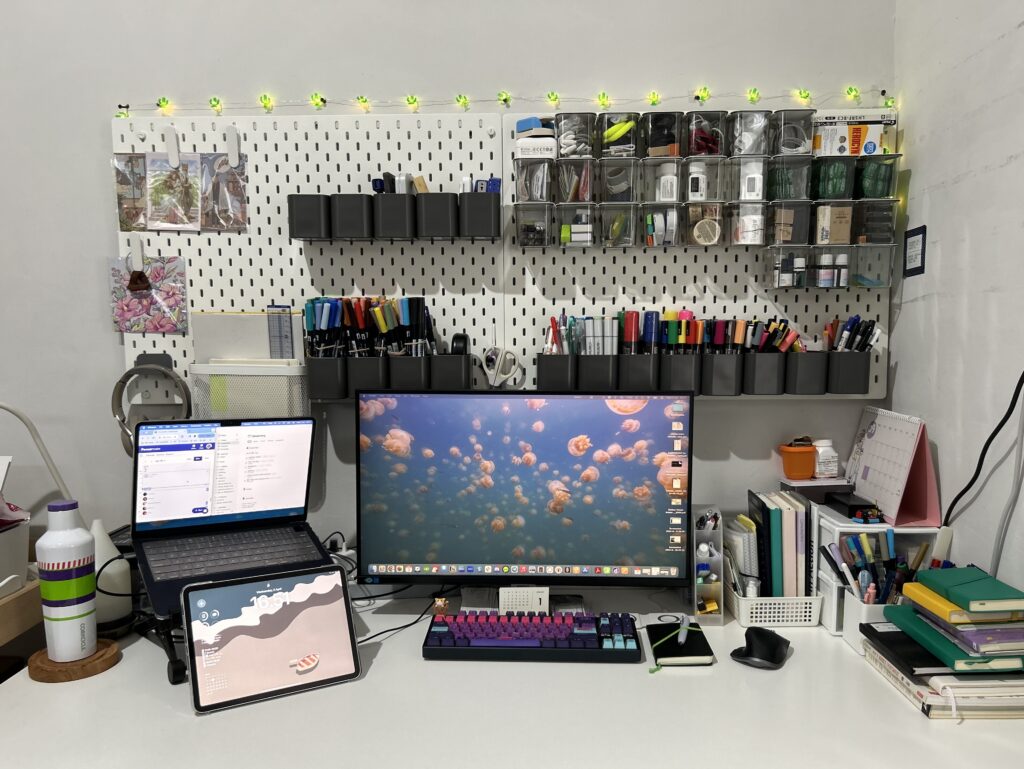
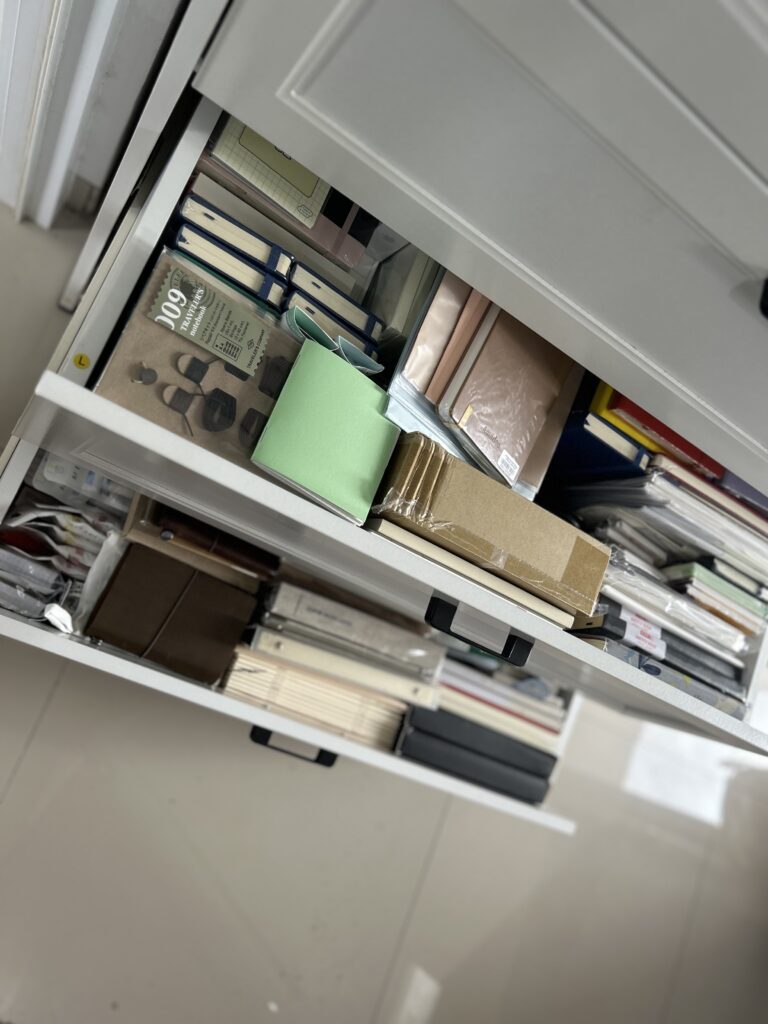
The best part: I use them all 😆
What made you interested in journaling in the first place, and since when?
I grew up with my aunt, and when I was in primary school, she introduced me to the best stationery brands that she owned.
A lot of children at that time — and still even up to now, I guess? — were quite satisfied and opted for colorful-looking pencils and scented erasers. Remember those? Hahah. A lot of those stationeries were quite cheap and fun-looking too.
Mine, though, were far from “fun”. Inside my pencil case, there were only plain-looking pencils and a black eraser. That said, those were, and still are, my pride and joy. The pencil, a Tombow MONO, was blacker than the blackest sea in a moon-less midnight. The eraser, from Mitsubishi Boxy, was the top of its class — you know that too, right?! That eraser can erase your sin, hahah. The eraser erased any mistakes or scribblers without ripping the paper. Little Dian always smiled whenever she’s checking her worksheet. Also, my handwritings are really neat since I was small, and it brings me joy whenever I see it.
That said, I started journaling as an adult. It was when Ryder Carroll introducing bullet journal system back in 2013. He published this really cool stop-motion video with him showing how to do rapid logging and migration in a Moleskine notebook. It looked so simple and easy, it immediately clicked with my ADHD brain. Since then, I use bullet journaling and adapt it with my ever-growing needs.
I remember when I shared with you my interest in doing journaling, you recommended me bullet journal! How many journaling methods that you are familiar with?
Alright, sooo… This is just my theory, so take this with a grain of salt.
Depending on the content, there are at least 5 types of journaling:
- Long-form journaling, or as we usually called it as a diary,
- Art journaling,
- Scrapbooking,
- Junk journaling, and…
- Personal organizer — including bullet journal.
And, if we want to classify it based on intent, that would be unlimited. It’s because the whole idea of journaling depends on what you want to do. Your intentions. The most common ones are travel journaling, gratitude journaling, gardening journaling, dream journaling, commonplace book (this is the type of journal/book where you can write facts or information that you want to log), and many more.
We can combine both: A travel journal can be in long-form, art, or junk. The same goes with the other types of journals. It’s up to the journal owner and the sky is the limit.
As an individual with ADHD, how did journaling help you?
Oh, whoa, alright, my journaling journey has been through a lot and with so many changes. So many. The reason, the journal adapted with my ever-changing needs.
For example, this year (2024), I’m doing long-term planning in this app Things 3. My very short-term planning a.k.a. daily logs are in my pocket-size Moleskine notebook. This Moleskine notebook only filled with a combination of daily log and time log, and several collections pages — a really simple book.

That said, the Moleskine book has been instrumental in helping me with my daily tasks: My daily log consists of 2 pages — the left page is for time log, and the right page is for my daily log. Every morning, I choose important tasks from my Things 3 app and I wrote them down on my daily log spread (right page). Then, on every hour, I set the task I want to do. However, instead of listing down all tasks in one go, I’m doing it incrementally. Hour 1: “What do I want to do in this hour?” — then, I write it down on the time log (left page) then do the task until 1 hour is up. I continued with Hour 2: “What do I want to do in this hour?”, and so on and so forth. This method helped me to avoid feeling overwhelmed and stay focused with important tasks.


How many notebooks that you actively and regularly use?
… … … … Six notebooks.
- Leuchtturm1917 for copy-pasting information that I got from my social media timelines (trust me, there are some good tips out there).
- Leuchtturm1917 for long-form journaling where I wrote about daily life and positive thoughts and opinions.
- A small repurposed notebook that I made from several other notebooks that I no longer use (a.k.a. I scavenged them) for long-form journaling that skirting on negative thoughts. I usually wrote in this book whenever I feel sad, anxious, or scared. I planned to burn or throw this book once it’s finished.
- Hobonichi Weeks as a health journal. This book is filled with my family’s medical records and trackers. I set this up to make it easier to grab whenever we need to visit ER.
- Midori MD as a commonplace book. This book is filled with information and things that I found interesting and useful, and the resources can be from anywhere: Social media, books, Youtube, online courses, chatting with friends during tea time, etc. I planned to give this to my son when he grows up as a life guidebook.
- … Aaaand, the Moleskine that I mentioned above 😄
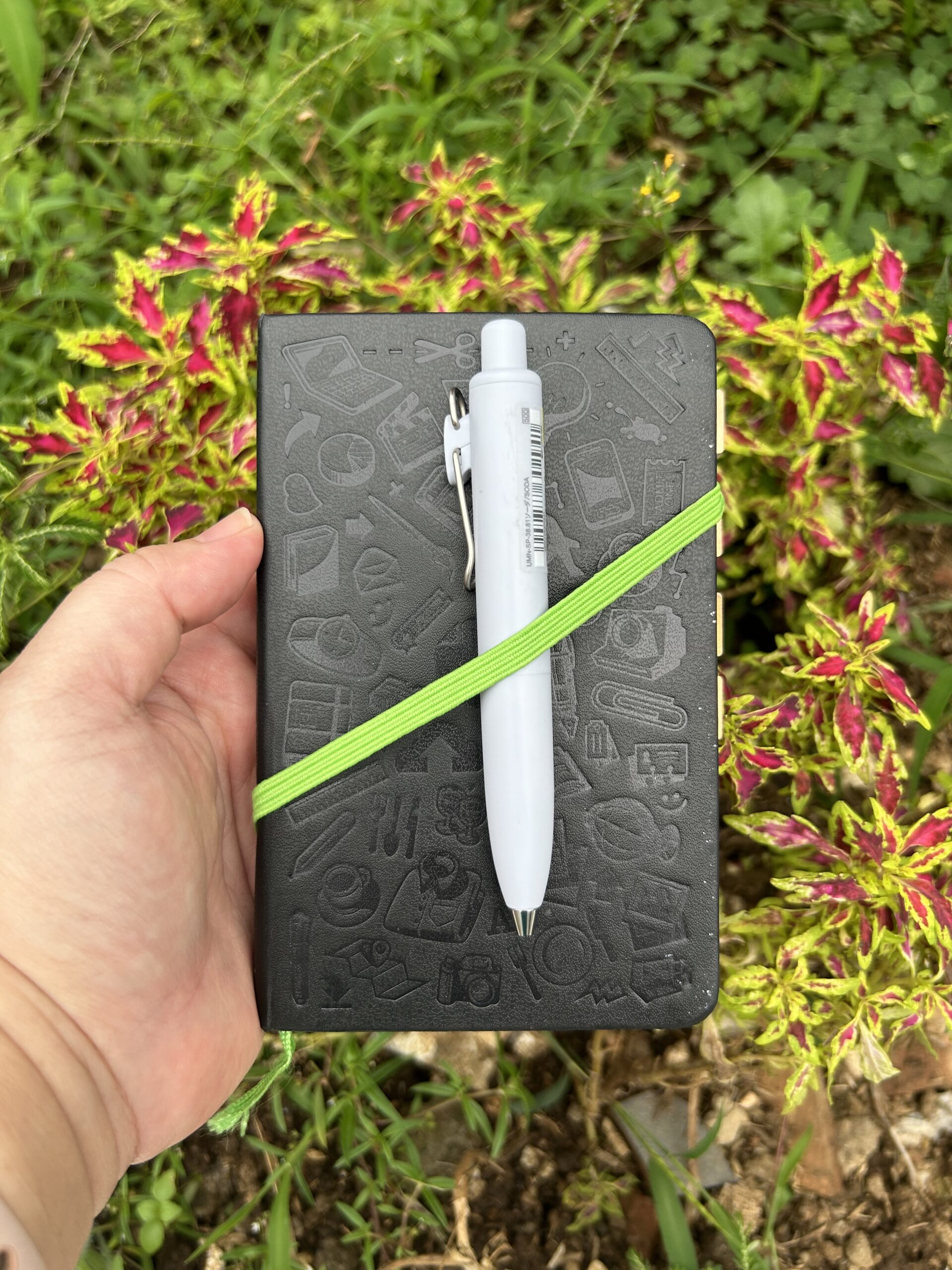
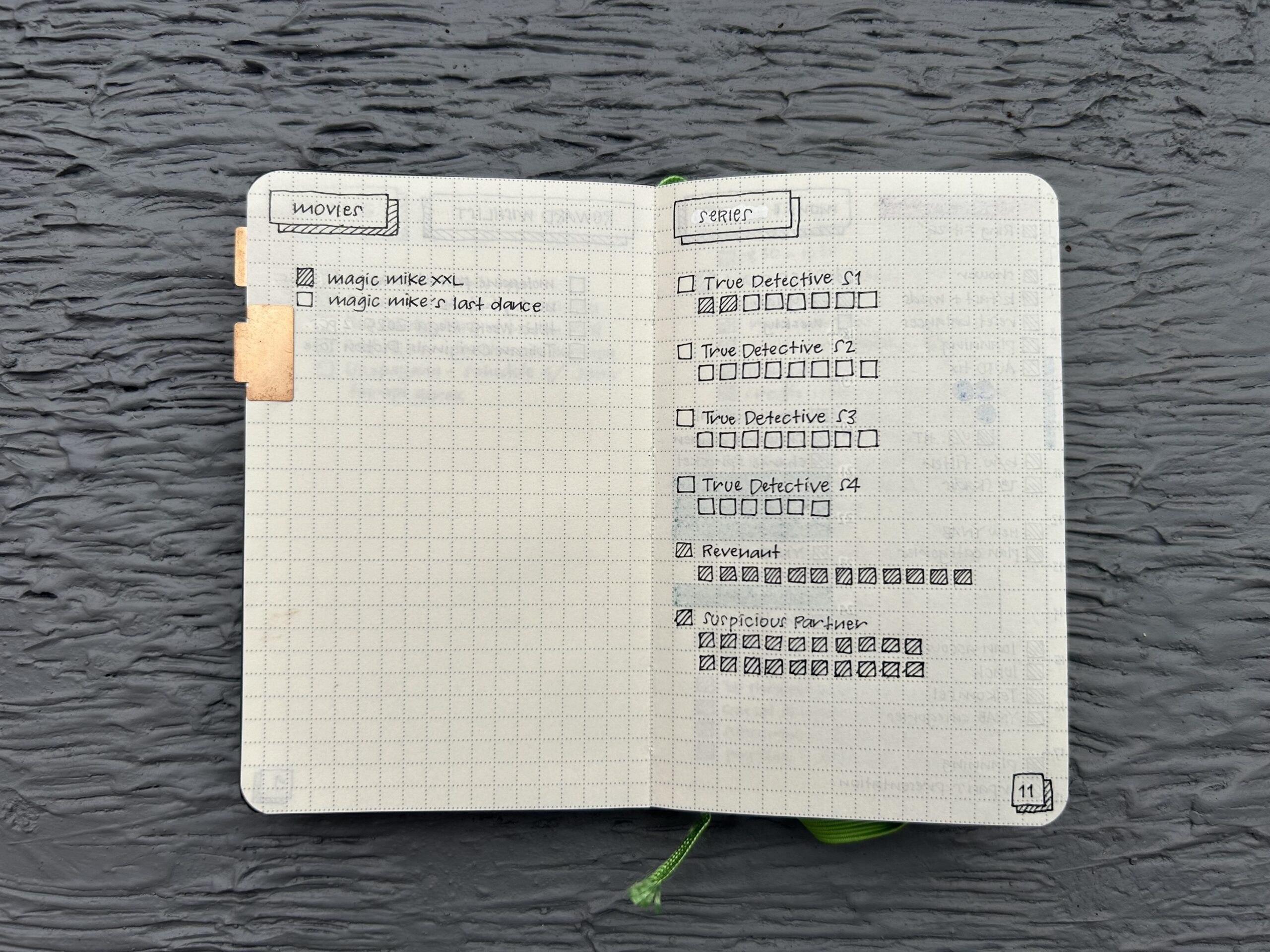
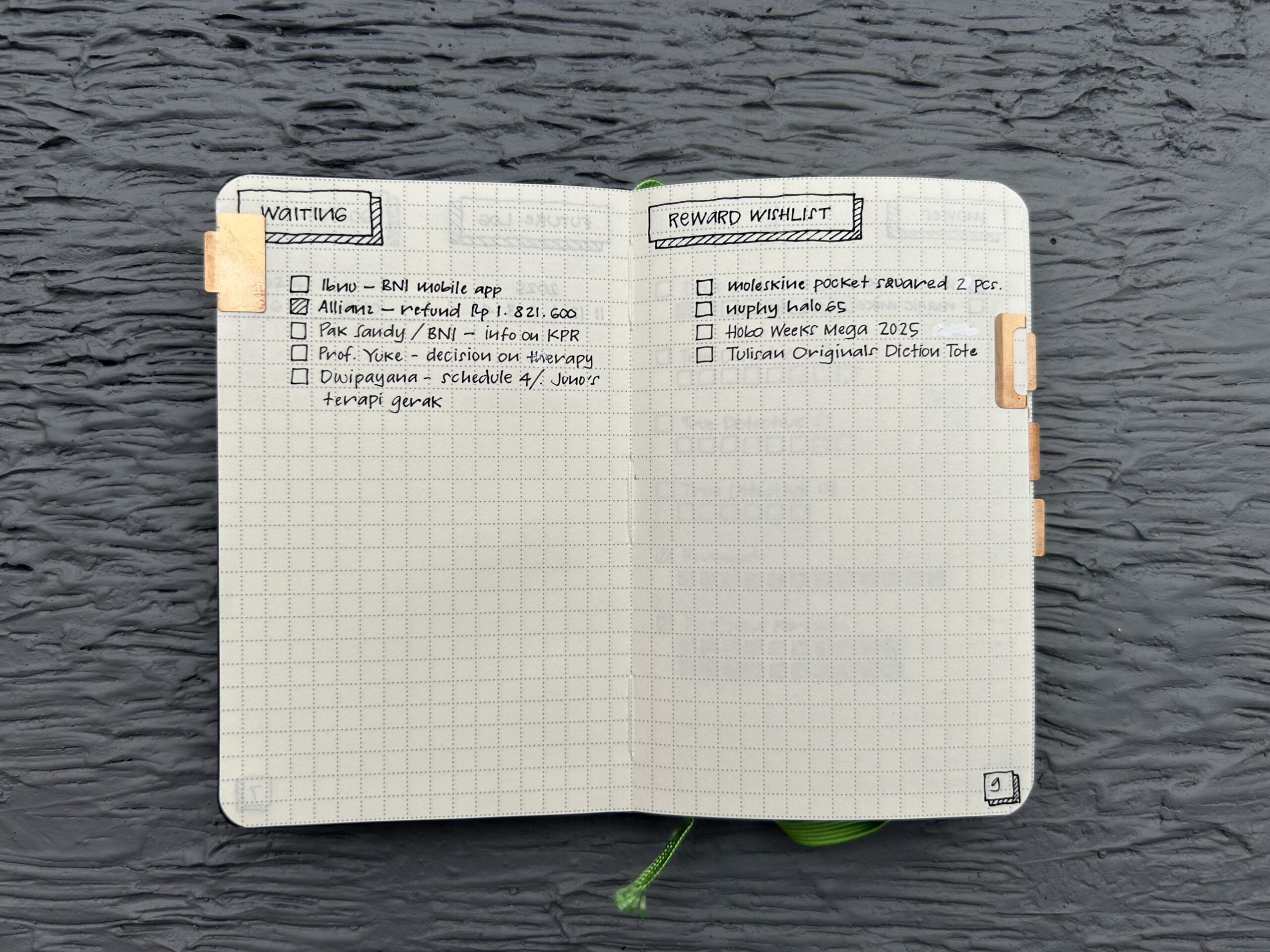
This is from my personal experience: There are times I found that journaling can feel monotonous, especially when the tasks/to-do list are the ones that you routinely do on daily or weekly basis. Not only this made me feel lazy in journaling, it also made me wondering if journaling is even needed. What do you think? And have you ever had that kind of situation? How do you cope with that?
Let me start with this: Being diligent in journaling is a myth.
I have ADHD and bipolar disorder, and there were times I literally couldn’t do anything. When I’m on my depressive episode, I could stay in bed, bundled with a blanket, and do nothing for a couple of weeks. And that’s okay. You don’t have to journal. You are not in your top condition, and it’s okay to not journaling.
After my depressive episode ended, I simply turn over a new page and start journaling.
That said, there are a couple of tips you can try, though!
- Put the notebook in the area where you usually around/within your vicinity. I put mine on my workdesk because I spend most of my time working in front of my laptop. If you are a stay at home mother and you found yourself hover around the, say, kitchen for most of the times, then put your notebook on the kitchen area.
- Decide how many times you want to journal on a day and set reminders on your phone.
In the end, your journal your rule. There are times you wanted to do long-form journal up to 5 pages. There are times you only wanted to write, “I feel freaking tired” and nothing more — and that’s okay! Your journal is your tool (more on that later!)
I found starting a new spread, be it monthly spread or a new notebook, can be really intimidating. Like… I always have this thought, “I HAVE TO CREATE A SUPER PRETTY SPREAD!” and I got frustrated when I made a mistake or typo. What do you suggest to have a more chill attitude in approaching journaling and creating a new spread?
Set your mindset (ha!): Journaling is a tool to help you, not an end product.
What kind of tool, you might ask. It’s a tool to help you create products: Feeling content and secure to have your bills paid on time, feeling happy and confident that you were able to finish your projects on time, feeling the joy of able to hold your focus in the daytime so you can have extra time to chill and spend with your family.
Can a tool get broken or missing? Yes. And you can change or even replace it.
With that new mindset, let me share with you the practical tips: That ugly spread that you see as a mistake? Cover them with washi tapes and stickers 😆
All you have to do is to cover, or you also “hide”, the whole spread with washi tapes, then turn over a new page to start the new spread.

My first journal looked exactly like this — filled with mistakes and washi tapes to cover them — and that notebook looked so gosh dang pretty.

Any tips and suggestions to those who wanted to start journaling/just started journaling?
Start simple, embrace the mistakes, and enjoy the process. And if you are slightly perfectionist, note that a handwritten journal is prone to errors. When mistakes happen (and trust me, it happens!), remember my tips about mindset above.
Happy journaling!

Leave a Reply